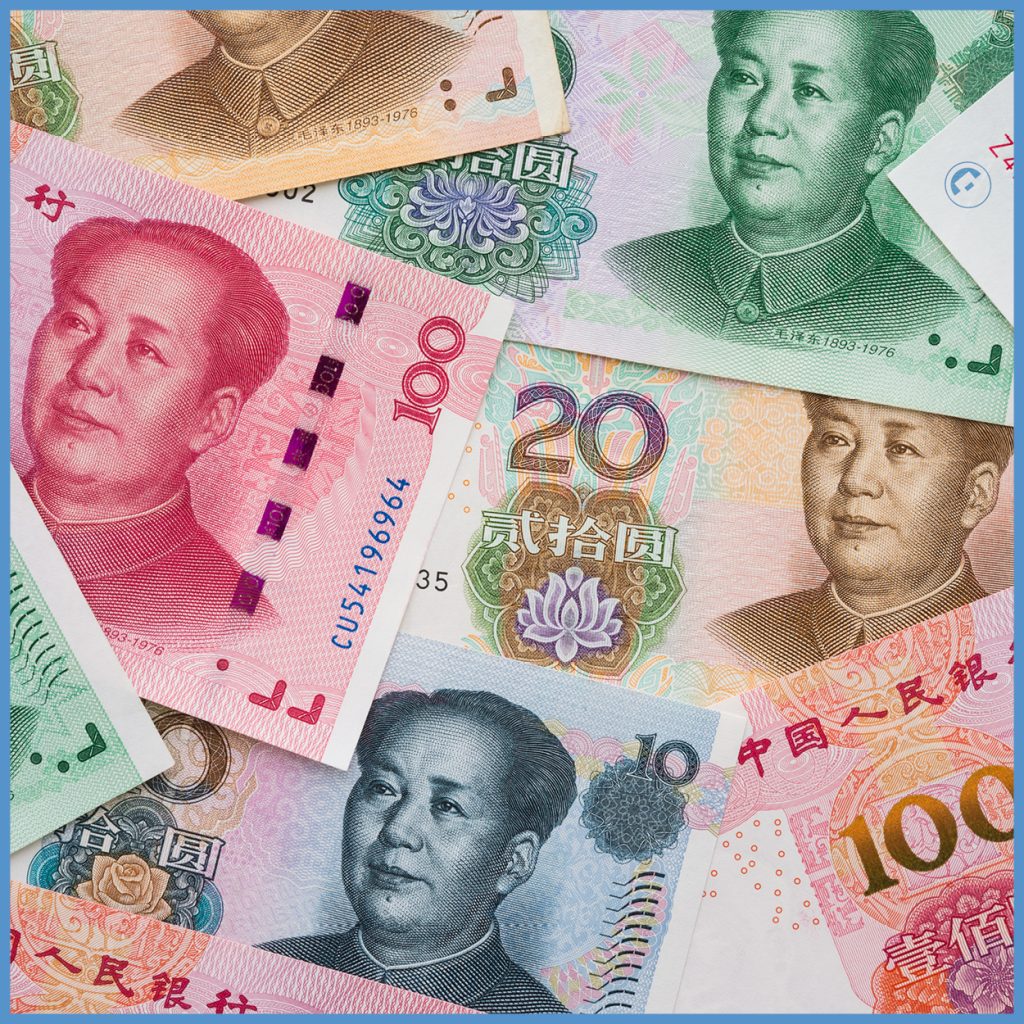Industrial subsidies are at the heart of the trade war

A decisive agreement for the future of multilateralism
The ‘Phase One deal’ signed by the United States and China on 15 January 2020 has captured the headlines. We are at the beginning of a presidential election year in the United States and Donald Trump is trying to prove the effectiveness of his aggressive protectionist trade policy. The main aim is to reduce the trade deficit, which has increased sharply during his presidency. In the battle for global market share, his weapon of choice is the threat of tariffs.
But we must not fail to see the forest for the trees. What is at stake is more structural than some medieval agreements over trade flows. Beijing’s commitments to end forced technology transfers, protect intellectual property and further open up the financial services sector have already been outlined in China’s new Foreign Investment Law and are likely going to benefit all of China’s trading partners. Industrial subsidies, on the other hand, are a key element missing in the agreement between Washington and Beijing.
The trade war is now an economic conflict destined to last. At its centre are concerns about unlimited subsidies from the Chinese government and their distorting effect on competition, in both the Chinese economy and international markets. The United States is not the only one concerned. A dirigiste government that relies on considerable financial reserves is an anomaly in global market capitalism. Such an exception is not sustainable unless you restrict trade liberalisation, which is itself a very costly option.
Therefore, we should instead pay attention to another agreement that was signed on 14 January, on the eve of the ‘Phase One deal’. The so-called trilateral agreement between the United States, the European Union and Japan sends a signal to limit industrial subsidies and is therefore an important step forward. In fact, it could be a turning point if it opens the door to a multilateral reform in the WTO to restore fair competition.
The good, the bad and the ugly: subsidy rules that need to be strengthened
The historical dispute between Airbus and Boeing shows that industrial subsidies are not a new phenomenon. In order to regulate them, the Agreement on Subsidies and Countervailing Measures (SCM Agreement) was signed when the WTO was created in 1995. It recognised only a limited number of acceptable support measures, for specific sectors and under certain conditions. A subsidy was defined as (i) a financial contribution (ii) by the government or any public body within the territorial jurisdiction of a member state and (iii) which confers a benefit.
However, the scope of the SCM Agreement is limited. It covers only export subsidies and subsidies intended to increase domestic supply or replace imports, i.e. a negligible part of all subsidies. Moreover, while the agreement theoretically allows claims against subsidies that aim at increases in domestic production capacity, the procedure to obtain the authorization for countervailing duties is quite difficult: Not only does the complainant bear the burden of proof to show the injury that has been suffered, but intransparent government funding in some countries complicates this task even further and discourages complaints from being lodged in the first place. Finally, the definition of a public body has been the subject of much litigation as government methods of influence have evolved. China prefers a definition according to which the public body has a government mandate. Others rightly favour the requirement that the government has a financial stake. The ways in which governments control or influence companies are much more varied and diffuse, as are the benefits that can be provided.
In addition to subsidies, there are many other discriminatory practices that target inward direct investment (including forced technology transfers, licensing, land lease and labour costs). But industrial subsidies play a central role in the Chinese system of economic discrimination. Foreign companies are faced with unfair competition from Chinese companies in their home markets, in the Chinese market and in the markets of third countries. The competitiveness gaps that have consequently opened up will very likely increase the structural dependence that third countries have on Chinese imports, both for intermediate and finished goods. Economic interdependence based on comparative advantage would gradually transform into economic or even political dependence on China.
There is another reason why a new framework for industrial subsidies has become necessary. In the scenario of a ‘subsidy race’, no country would have sufficient public funds to counter China’s declared ambition to become the world’s leading technological power by relying on its state-owned enterprises. A desire to preserve strategic autonomy could reopen the debate on the appropriate use of subsidies. Chinese government subsidies could therefore encourage other countries to abandon the rules of the market economy in favour of state capitalism.
The trilateral is an important step to limit industrial subsidies
Given the inertia of multilateral discussions, the objective of the Americans, Europeans and Japanese became clear. In December 2017, on the sidelines of the 11th WTO Ministerial Conference in Buenos Aires, they created the trilateral format ‘within the WTO’. The declared aim was to use all of their weight to counter distortions linked to subsidies, state-owned enterprises and forced technology transfers, which create overcapacity and unfair competition, hinder the development of innovative technologies and destabilise the functioning of international trade.
It has been more difficult to agree on the modalities. First of all, it was a matter of finding the right balance between the offensive objective of restricting Chinese subsidies and the defensive objective of preserving the policy space for industrial policy. For some time, discussions appeared to be stuck in limbo. This increased the risk that the trilateral format would appear to only denounce Chinese practices in order to underpin the unilateral American strategy of using tariffs for blackmail. By agreeing on a realistic option, Washington has finally signalled that it takes the issue seriously.
The agreement is even more interesting since it systematically refers to the ultimate objective of multilateralisation on the basis of a revision of the SCM Agreement.
- The first step is to expand the list of subsidies that are prohibited by the WTO by revising Article 3.1 of the SCM to target four new types of subsidies: unlimited guarantees, subsidies to an insolvent or ailing enterprise in the absence of a credible restructuring plan, subsidies to enterprises unable to obtain long-term financing or investment from independent commercial sources operating in sectors or industries in overcapacity, and lastly, certain direct forgiveness of debt.
- The next step is to reverse the burden of proof by requiring governments to demonstrate that their subsidies do not distort trade or create overcapacity. This much more stringent discipline would make subsidies in support of zombie companies which should have gone bankrupt, cause overcapacity (revision of Article 6.3 SCM) or lower input prices almost prohibitively expensive–unless the subsidising country can prove that there is no major injury.
- This new discipline must go hand in hand with improved notification of subsidies. Since 1995, the percentage of members notifying subsidies has fallen from 50 per cent to 38 per cent. Article 25 of the SCM should be revised to prohibit any non-notified subsidy. This would require the respective government to provide sufficient information to demonstrate that the subsidy is authorised and ensure full transparency.
- It would also be a ‘living’ agreement, because new categories of distorting subsidies could be added later on. Similarly, all three parties agreed on the need to clarify the definition of a ‘public body’ which sets out the scope of the new disciplines.
- Finally, although the trilateral has initially focused on subsidies, it foresees future steps of cooperation to end forced technology transfers, to change WTO rules that allow countries like China to present themselves as a developing country for special and differentiated treatment, or to establish rules on digital trade.
This agreement is particularly interesting because the blocking of the WTO dispute settlement mechanism, a result of Washington’s refusal to appoint new judges to the Appellate Body, has heightened fears of an accelerated pace of US disengagement from the multilateral framework. Yet it remains to be seen whether these unilateral commitments will succeed in creating a knock-on effect on other partners that will move China forward.
From ‘trilateralisation’ to ‘plurilateralisation’
The trilateral agreement has put in place an SCM+ framework, that is, it unilaterally commits its parties to disciplines that are more demanding than those of the existing SCM agreement. As with the discussions on e-commerce, where negotiations are underway in a plurilateral setting, the trilateral agreement is an open and non-discriminatory framework for industrial subsidies that respects the Most Favoured Nation (MFN) principle.
As early as May 2018, the trilateral discussions raised the need to ensure the participation of other key partners in order to achieve a critical mass of major subsidy-granting economic powers.
If China is the primary concern, the objective would be to achieve a ‘plurilateralisation’ of the agreement by involving all G20 countries, who account for nearly 90% of world GDP and 80% of world trade. Countries such as Australia, Brazil and Canada could play a key role in achieving this critical mass.
The challenge that remains is to determine what will spur China to move forward with domestic reforms. The recent trend amongst advanced economies, such as the EU, to strengthen foreign investment control mechanisms that protect strategic sectors has undoubtedly had an impact on China’s new Foreign Investment Law of March 2019, which reduces discrimination against foreign companies. If China does not commit itself to reducing its competition-distorting rules, public procurement could in turn be affected by defensive measures–a signal for the gradual closure of major economies, which would be untenable for the Chinese economy.
* * *
The trilateral agreement on industrial subsidies sends a strong signal, both to China, its main target, and for the possibility of reforming the multilateral system. While a multilateral negotiation to reduce subsidies would have been doomed to failure, the combined weight of the three major powers makes a substantial ‘plurilateralization’ of the agreement possible and could even pave the way for multilateralisation in the medium term.
Moreover, the truce between Washington and Beijing has given rise to fears that the EU would be the US administration’s new prime target in 2020. The convergence of interests on industrial subsidies, like the tone adopted by Donald Trump in Davos, are welcome signs of a new calm in transatlantic relations. The one-year extension that the American and French presidents have given themselves to reach an agreement at the OECD on the taxation of technology companies, without retaliatory measures in the meantime, is further encouraging such a cooling-off.
The reform of the WTO, in particular the issue of subsidies, was the first priority that the new president of the European Commission, Ursula von der Leyen, assigned to the new trade commissioner, Phil Hogan. The trilateral agreement therefore bodes well for the future. It validates the Commission’s technical approach based on its long experience of controlling state aid in the European market. It also confirms the political viability of Europe’s strategy to keep the US in the WTO tent while at the same time trying to bring China closer to its centre. But the agreement has yet to prove itself. The knock-on effect of other countries joining the trilateral agreement would be an important accomplishment for the 12th WTO Ministerial Conference in Kazakhstan this June. If it succeeds, it could reinforce the legitimacy of the plurilateral path to preserving an open international trading system based on common rules.



